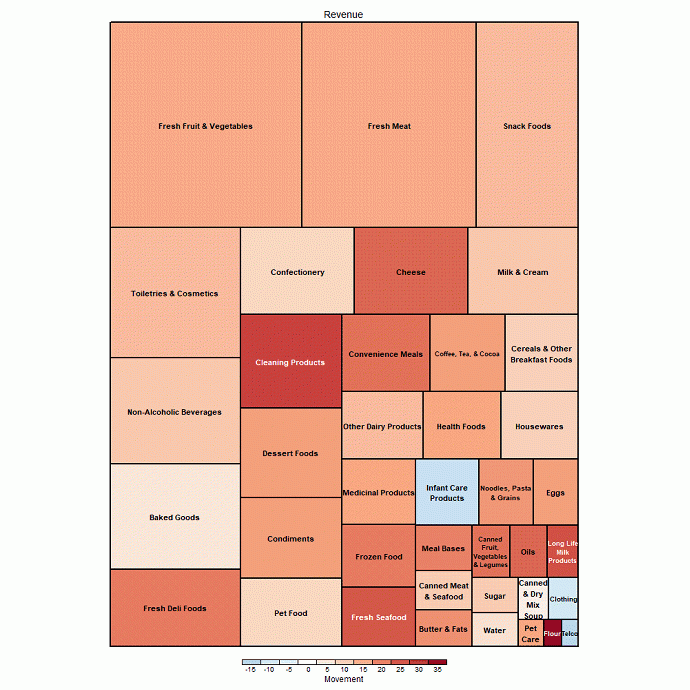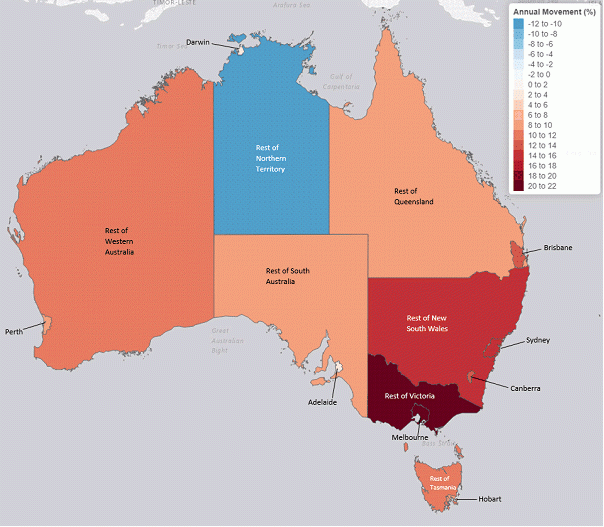July key figures
| July 2020 | June 2020 to July 2020 | ||
|---|---|---|---|
| $m | % change | ||
| Turnover at current prices | |||
| Trend | na | na | |
| Seasonally Adjusted | 30 705.3 | 3.2 | |
na not available
July key points
Current prices
- Due to the impacts of COVID-19 on retail trade the trend series has been suspended from February 2020.
- The seasonally adjusted estimate rose 3.2% in July 2020. This follows a rise of 2.7% in June, and a rise of 16.9% in May 2020.
- The following industries rose in seasonally adjusted terms in July 2020: Household goods retailing (4.0%), Other retailing (4.4%), Cafes, restaurants and takeaway food services (4.9%), Food retailing (1.2%), Clothing, footwear and personal accessory retailing (7.1%), and Department stores (4.0%).
- The following states and territories rose in seasonally adjusted terms in July 2020: New South Wales (5.9%), Queensland (5.0%), Western Australia (3.8%), South Australia (2.9%), the Australian Capital Territory (5.8%), Tasmania (4.2%), and the Northern Territory (3.1%). Victoria (-2.1%) fell in seasonally adjusted terms in July 2020.
Changes in this issue
There are no revisions to the original estimates.
This issue includes updated online retail turnover estimates for the July 2020 reference month. This issue also includes experimental online time series spreadsheets for the first time. The spreadsheets provide data for online on a new consolidated industry split. More information can be found in Supplementary COVID-19 Analysis - Online sales. This issue also includes updated consumer sales estimates for the June quarter 2020. The estimates are provided and explained in the appendix section of this publication.
Coronavirus (COVID-19) in July
The World Health Organisation (WHO) commenced daily situation reports of the coronavirus (COVID-19) outbreak on 21 January 2020 and identified it as an international health emergency on 30 January. From 1 February, the Australian Government placed travel restrictions on those travelling to Australia from mainland China and restrictions on inbound tourism have remained in place. In March, regulations to encourage social distancing saw further impacts on the ability of businesses to trade as normal. This included restrictions on dining-in at restaurants and restrictions on the number of people that could be in a shop at a particular time. Restrictions were eased gradually in May and June 2020, In July 2020, a spike in coronavirus cases in Victoria saw restrictions tightened in Victoria, especially in Melbourne. These were furthered tightened in Victoria at the start of August. Movement across state borders have been restricted.
Suspension of trend series
The trend series attempts to measure underlying behaviour in retail activity. In the short term, this measurement will be significantly affected by changes to regular patterns in retail spending that will occur during this time, as certain businesses are restricted from trading for example. If the trend estimates in this publication were to be calculated without fully accounting for this irregular event, they would likely provide a misleading view of underlying retail activity.
It may be some time before the underlying trend in retail activity can be accurately estimated. The retail trend series has therefore been suspended as at February 2020. The trend series will be reinstated when more certainty emerges in the underlying trend in retail.
Time series data
- Data available from the Data downloads section of this issue on the ABS website include longer time series of tables in this publication:
- Monthly retail turnover by state and 15 industry subgroups in trend, seasonally adjusted and original terms
- Monthly retail turnover completely enumerated and sample sectors, by six industry groups and also by state in original terms
- Monthly retail turnover completely enumerated sector, total level in trend, seasonally adjusted and original terms
- Quarterly retail chain volume measures by six industry groups and also by state in trend, seasonally adjusted and original terms
- Quarterly retail turnover per capita in trend, seasonally adjusted and original terms
- Quarterly sales to households by selected service industries in original terms
- Quarterly measures of total retail turnover per capita.

